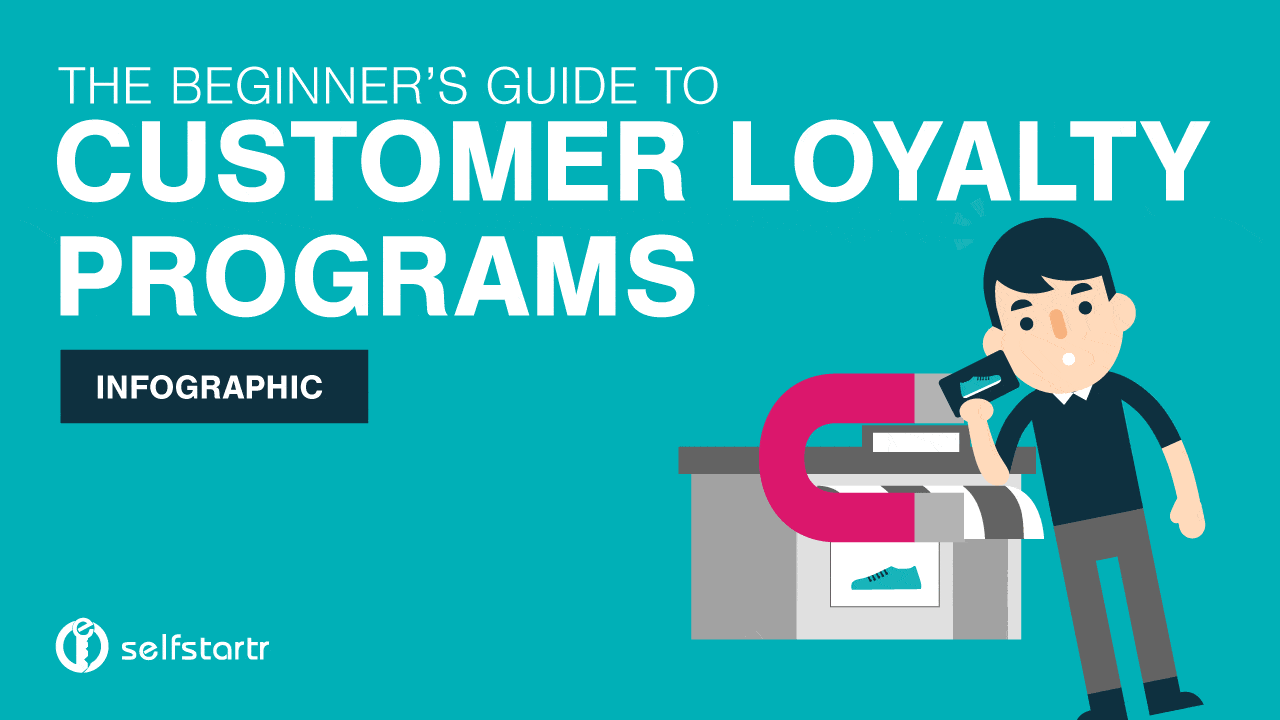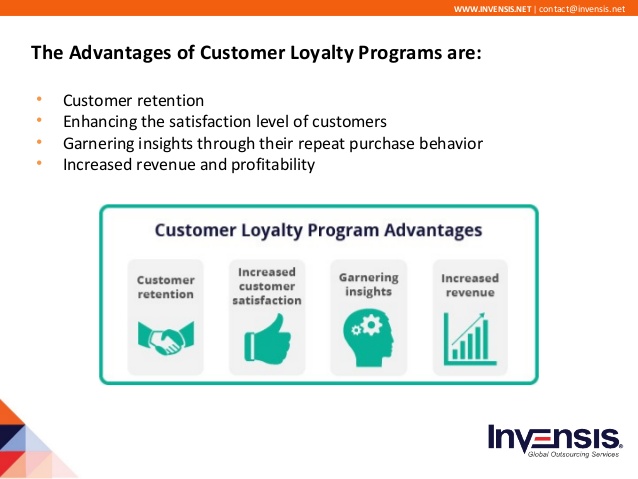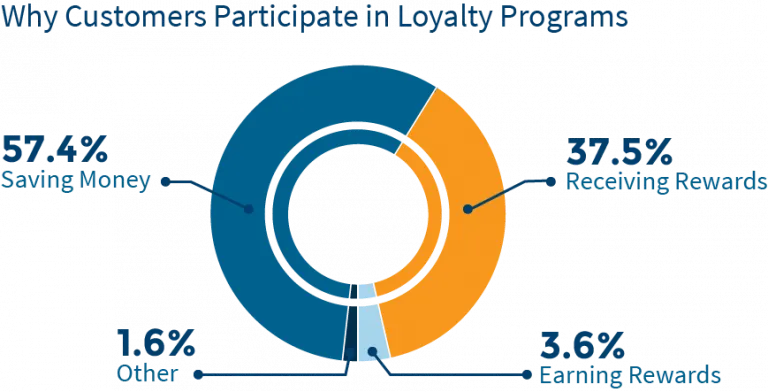All Categories
Featured
Table of Contents
In Pickerington, OH, Arielle Melendez and Pamela Beard Learned About Positive Reviews

What if you could grow your business without increasing your costs? In fact, what if you could in fact minimize your spending however increase your sales, year after year? Would you do it? If you're a company owner, then you'll likely offer a definite 'yes', a basic answer to an even simpler concern.
A rewards program tracks and rewards particular spending behavior by the consumer, providing unique benefits to loyal clients who continue to shop with a specific brand name. The more that the consumer invests in the shop, the more advantages they receive. Over time, this incentive builds loyal customers out of an existing consumer base.

Even if you already have a reward program in place, it's a good concept to dig in and fully understand what makes consumer commitment programs work, as well as how to carry out one that costs you little cash and time. Don't fret, I'll help you with that. I'll break down the main benefits of a commitment program and the best ways to create faithful consumers.
Let's dig in. Customer commitment is when a client go back to do service with your brand name over your competitors and is largely influenced by the favorable experiences that the client has with your brand. The more favorable the experience, the most likely they will return to patronize you. Customer commitment is exceptionally important to companies since it will assist you grow your business and sales faster than a simple marketing plan that focuses on hiring new customers alone.
A few ways to determine consumer loyalty include:. NPS tools either send out a brand performance study by means of e-mail or ask clients for feedback while they are checking out a company's site. This details can then be used to much better comprehend the likelihood of consumer loyalty. A repurchase ratio measures the ratio of repeat purchasers versus one-time buyers.
Consumer loyalty index (CLI). The CLI tracks customer loyalty gradually and resembles an NPS survey. However, it considers a few additional factors on top of NPS like upselling and redeeming. These metrics are then used to evaluate brand name loyalty. A consumer commitment program is a marketing strategy that rewards clients who make purchases and engage with the brand on a continued basis.
Consumer benefits programs are developed to incentivize future purchases. This encourages them to continue working with your brand. Customer loyalty programs can be established in lots of various ways. A popular client commitment program benefits customers through a points system, which can then be invested on future purchases. Another type of consumer commitment program may reward them with member-exclusive advantages or totally free gifts, or it might even reward them by donating money to a charity that you and your clients are equally passionate about.
In Cedar Rapids, IA, Chana Sawyer and Nicholas Walters Learned About Online Community
By offering benefits to your clients for being devoted and supportive, you'll construct a connection with them, deepening their relationship with your brand name and hopefully making it less most likely for them to switch to a competitor. You've likely seen consumer commitment programs in your own shopping experience, whether at your preferred cafes or your most frequented supermarket.
But simply because everybody is doing it doesn't mean that's a great sufficient factor for you to do it too. The better you understand the benefits of a customer rewards program, the more clearness you will have as you produce one for your own store. You won't be sidetracked by interesting advantages and complicated loyalty points systems.
Remember: work smarter, not harder. Consumer retention is the main benefit of a benefits program that serves as a foundation to all of the other advantages. As you offer rewards for your existing consumer base to continue to buy from your shop, you will offer your store with a constant flow of money month after month.
By growing your retention rate, you can stop investing as much time or cash on increasing your total variety of clients. Why is this essential? Faithful customers have a higher conversion rate than new consumers, implying they are most likely to make a transaction when they visit your shop than a brand-new client.
By increasing your retention rate by only 5 percent, you can increase your revenues by 25 percent and as much as by 95 percent. Needless to state, your retention rate matters. Key Takeaway: If you wish to substantially increase your earnings, offer incentives for your existing consumers to continue to shop at your shop.
And you won't need to invest money on marketing to get them there. Client acquisition (aka bringing in brand-new consumers) takes a lot of effort and cash to encourage complete strangers to trust your brand name, concerned your store, and attempt your products. In the end, any cash made by this new customer is overshadowed by all of the cash invested on getting them there.
Key Takeaway: If you desire to minimize costs, concentrate on client retention instead of consumer acquisition. When you focus on providing a favorable customized experience for your existing customers, they will naturally tell their pals and family about your brand name. And with each subsequent transaction, loyal consumers will inform much more people per transaction.
In King Of Prussia, PA, Jeffrey Griffin and Kareem Hurley Learned About Online Sales
The finest part? Since these new clients came from trusted sources, they are most likely to turn into faithful consumers themselves, investing more typically than new clients generated by other marketing efforts. The Chase Ultimate Rewards program, for example, uses significant advantages for people who travel a lot.
The 'supreme benefits' that Chase cardholders get include 2x points per dollar invested in all travel purchases along with main rental automobile insurance coverage, no foreign deal charges, journey cancellation insurance coverage, and purchase protection. For individuals who take a trip a lotand have non reusable income to do sothere is an enormous incentive to spend money through the supreme rewards program.
This entire procedure makes redeeming benefits something worth extoling, which is precisely what numerous cardholders end up doing. And to assist them do it, Chase offers a bonus offer for that too. Key Takeaway: Make it easy for your clients to boast about you and they will spread out the word about your look for totally free.
When you get the essentials down, then utilizing a commitment rewards app can assist take care of the technical details. Here are the actions to start with creating your consumer commitment program. No consumer wishes to buy products they do not want or require. The same goes for your loyalty program.
And the only method to customize a tempting consumer loyalty program is by thoroughly knowing your customer base. The very best method to do this? By implementing these methods: Develop client contact details any place possible. Guarantee your business is continuously developing an in-depth contact list that enables you to gain access to existing customers as typically and as easily as possible.

Track consumer behavior. Know what your consumers want and when they want it. In doing so, you can anticipate their wants and requires and supply them with a loyalty program that will satisfy them. Categorize consumer personal qualities and choices. Take a multi-faceted method, don't restrict your loyalty program to just one avenue of success.
Motivate social networks engagement. Frame techniques to engage with your clients and target audience on social networks. They will soon supply you with really informative feedback on your product or services, allowing you to better comprehend what they anticipate from your brand name. When you have actually worked out who your consumers are and why they are working with your brand, it's time to choose which type of loyalty rewards program will encourage them to remain devoted to you.
In El Dorado, AR, Finn Haynes and Jacquelyn Brown Learned About Gift Guides
However, the most typical customer commitment programs centralize around these main concepts: The points program. This type of program concentrates on rewarding consumers for each purchase they make with points in a point system. These points can then either be used on future purchases or put towards some kind of benefit.
The paid program. This kind of program requires customers to pay a one-time or annual charge to join your VIP list. Loyalty members who belong to this list are able to gain access to unique rewards or member-exclusive benefits. The charity program. This kind of program is a little different than the others.
This is accomplished by encouraging them to do organization with the brand and, in return, their commitment will be rewarded with a contribution to a charity. The tier program. This type of program focuses on increasing levels of brand name loyalty. The more faithful a consumer is to a brand name, the greater tier they will climb up to and the better the benefits they will get.
This type of program is just as it sounds, where one brand name partners with another brand to provide their cumulative audiences with unique member discounts or deals that they can redeem while doing service with either brand name. The neighborhood program. This kind of program incentivizes brand name commitment by providing its members with access to a like-minded community of individuals.
This type of program is relatively comparable to paid programs, nevertheless, the membership charge occurs regularly rather than a one-time payment. Next, select which consumer interactions you want to reward. Base these benefits around which interactions benefit your organization the many. For instance, to assist your organization out, you can offer action-based benefits like these: Reward consumers more when doing company with your brand during a sluggish duration of the year or on a notoriously sluggish day of organization.
Reward clients for engaging with your brand name on social networks. Incentivize specific items you are trying to move quickly. Incentivize purchases that are over a specific dollar quantity. The concept is to make your customer commitment program as simple as possible for your clients to use. If your customer commitment program isn't staff friendly, isn't easy to track, is too costly to run, or isn't easy for your clients to use or understand, then personnel and customers alike probably won't make the most of it.
To eliminate these barriers to entry, consider integrating a client loyalty software that will assist you continue top of all of these aspects of your program. Some quality client program software application consist of:. CandyBar is a digital punch card program. It works by tracking your consumer's purchases through an app on a computer system, phone, or tablet.
In Coram, NY, Preston Wise and Bruno Mcclure Learned About Business Owners
Loyalty members can then inspect their benefits by means of text message and company owner can use the program to call their consumers. Yotpo. Yotpo is a cloud-based client loyalty platform specifically for eCommerce companies. This software application is particularly proficient at collecting every type of user-generated material, valuable for tailoring a better customer experience.
Loopy Commitment is a handy client loyalty software application for businesses that predominantly use Google Wallet or Apple Pay as their payment platforms. The software application develops a digital commitment card that sends out push notifications to their clients' phones when they are in close proximity to their physical store. As soon as you've taken the time to decide which customer commitment strategies you are going to execute, it's time to start promoting and signing up your very first loyalty members.
Usage in-store ads, integrate call-to-actions on your website, send promos via e-mail newsletters, or upload marketing posts on social networks to get your consumers to join. It's important to understand the primary advantages of a client rewards program so that you can produce a customized experience for both you and your consumer.
Think about it. You understand what type of products your customers like to buy but do you understand what brings them back, day after day, week after week? What makes them choose your store over the shop across the street? What makes them your customer and not the customer of your greatest rival? Surprisingly, the answers to these questions don't boil down to discount rate costs or quality products.
Table of Contents
Latest Posts
In Fort Worth, TX, Warren Brewer and Talon Schmidt Learned About Online Sales
In Ladson, SC, Kasey Hooper and Jackson Boone Learned About Target Market
In 21701, Carlee Carney and Amiya Davis Learned About Potential Clients
More
Latest Posts
In Fort Worth, TX, Warren Brewer and Talon Schmidt Learned About Online Sales
In Ladson, SC, Kasey Hooper and Jackson Boone Learned About Target Market
In 21701, Carlee Carney and Amiya Davis Learned About Potential Clients